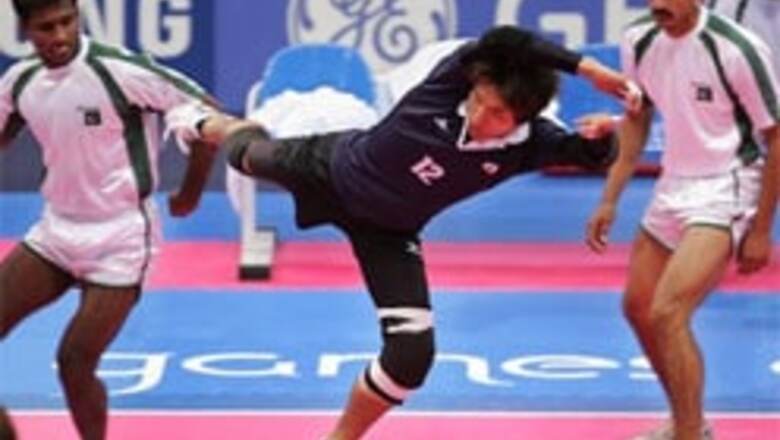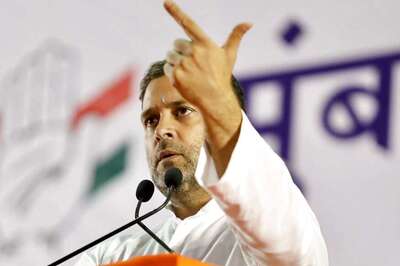
views
Doha: Chanting a different and faster mantra on the kabaddi court at the Asian Games is a group of Japanese Buddhist monks who have embraced the ancient Indian sport that evolved as a means of keeping soldiers fit between battles.
Shojun Shimizutani, Kokei Ito and Ryoki Nishioka first witnessed the sub continental rural game while studying at university, and have pursued it with so much gusto that they've become regular members of Japan's national team - which has a Buddhist monk as coach.
"Kabaddi represents sport in its purest form, underscoring the philosophy of simplicity," says Shimizutani, who caught his first glimpse of the game when studying Buddhism at Taisho University in Tokyo.
The school hosts a kabaddi club that is credited with spreading the game in Japan.
Of the 12 players in the national squad, 10 are former Taisho scholars.
Kabaddi is most popular in rural parts of India, Pakistan, Bangladesh, Nepal and Sri Lanka because of its low-tech, low cost requirements.
It is traditionally played on a rectangular, water-softened earth or grass court, but international events have been staged on synthetic mats for the past four years.
Kabaddi, a version of the schoolyard game of tag, is played between two, seven-member teams starting on either side of a line drawn across the court.
A 'raider' from one team is sent to the opposing half chanting the word 'kabaddi, kabaddi, kabaddi' continually while holding his breath and trying to score points by touching players from the opposing team and getting his body over the end line.
To keep the points, the raider has to get back into his own half without being caught or tackled to the ground.
If the catchers manage to prevent the raider returning to his side of the court, their team scores a point.
Shimizutani and his teammates Ito and Nishioka were all amused at their first glimpse of a kabaddi, which derives from the Hindi word meaning to hold one's breath.
"I think curiosity prompted me to try out the sport first time, it sure seemed a bit strange to begin with," Ito said.
PAGE_BREAK
Japan was introduced to the game through an exhibition match between two Indian teams in the 1980s.
There are now around 2,000 players in Japan. Millions of people play it in India, turning lanes into kabaddi fields for impromptu games.
In Bangladesh, it has been recognised as the national sport since 1972.
"The game sort of grows on you, that's why several students at the university carried on playing," said Ito, who has played for a dozen years.
"To me the game represents an austere lifestyle. All that's required of you is to be fit and agile."
Coach Keijun Ito is also a Buddhist monk, and a former player.
"Representing your country is always a privilege and an honor," he said.
Playing beside these monks in the national squad are teachers, a clerk, students of Japanese history and police officer Takeshi Kozu, who majored at university in Indian philosophy.
Kozu is back in the Japanese team after eight years - having earlier played in the 1994 and 1998 Asian Games.
"The game's changed a lot since I began playing," Kozu said. "We used to just draw lines on the pitch, one never visualized this sport will be played on mats."
The appeal remains, regardless of the arena, Kozu said.
"Kabaddi has a special attraction. Anyone who sees the game is tempted to play it, even trying it out just once."
As tempting as it is for Kozu and co., the fact remains that it remains an improbable assignment getting a medal at the Asian Games for team coming from outside the Indian subcontinent.
India has had a lock on the kabaddi gold medals since the sport was introduced at the 1990 Asian Games in Beijing, winning all four gold medals.
Bangladesh has picked up three silver medals and a bronze, while Pakistan has three bronze medals and a silver.




















Comments
0 comment